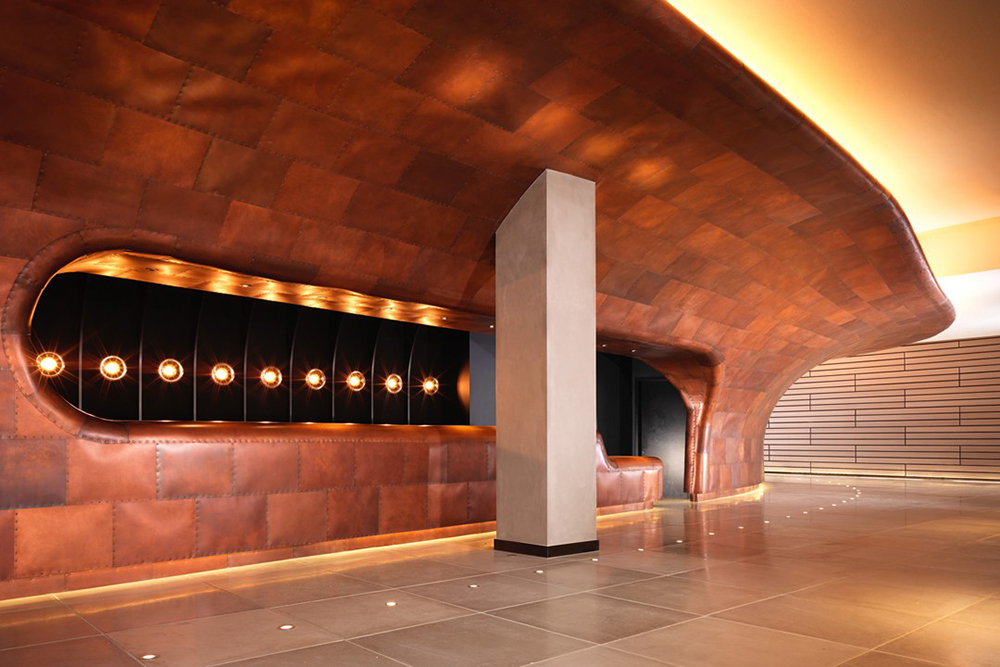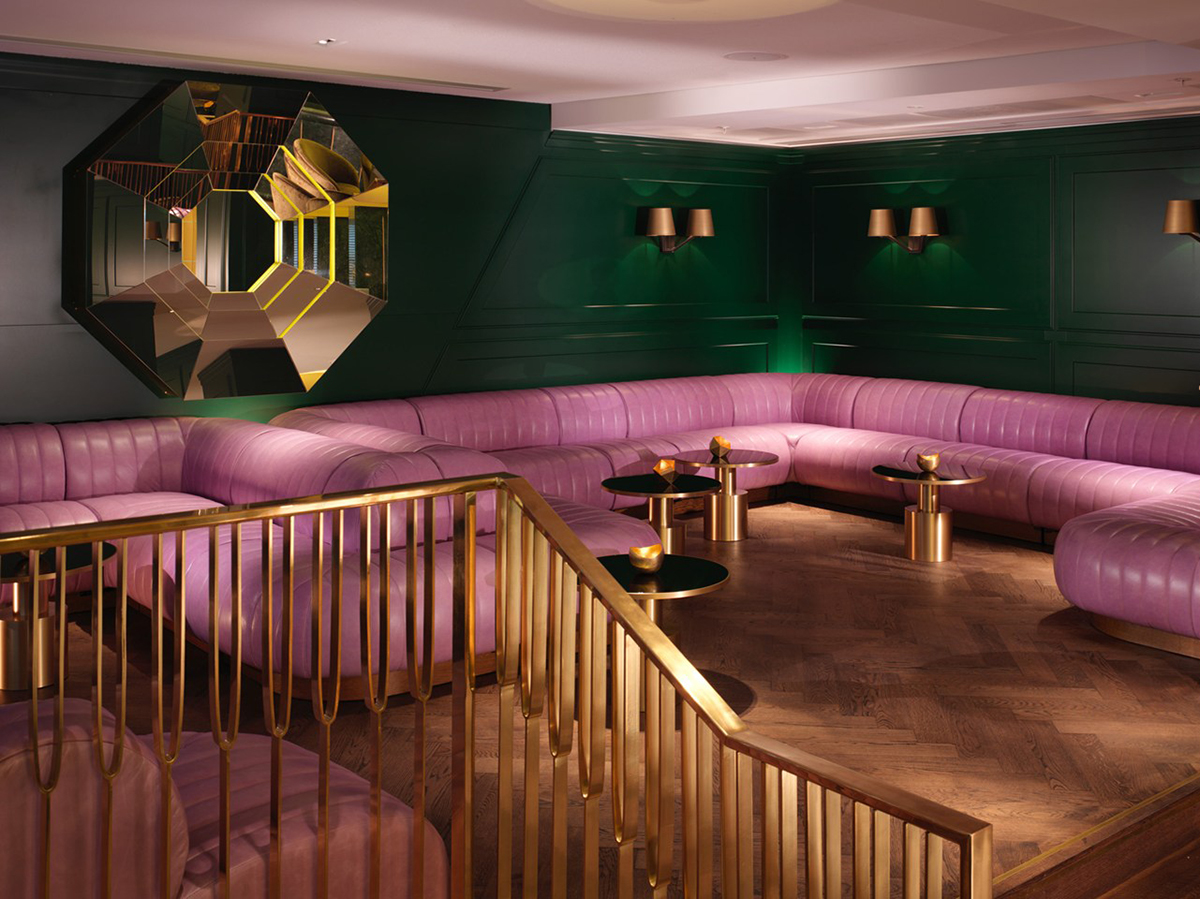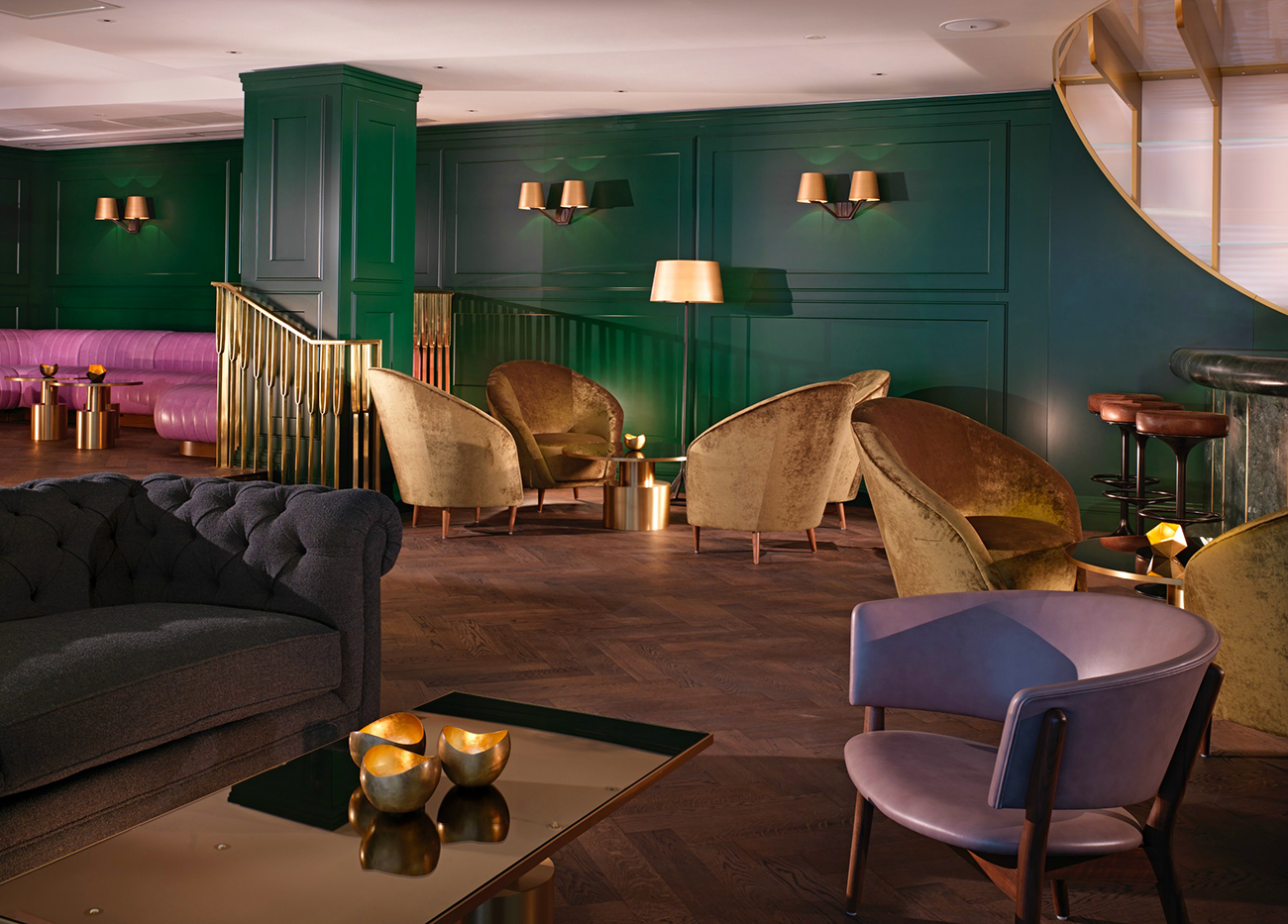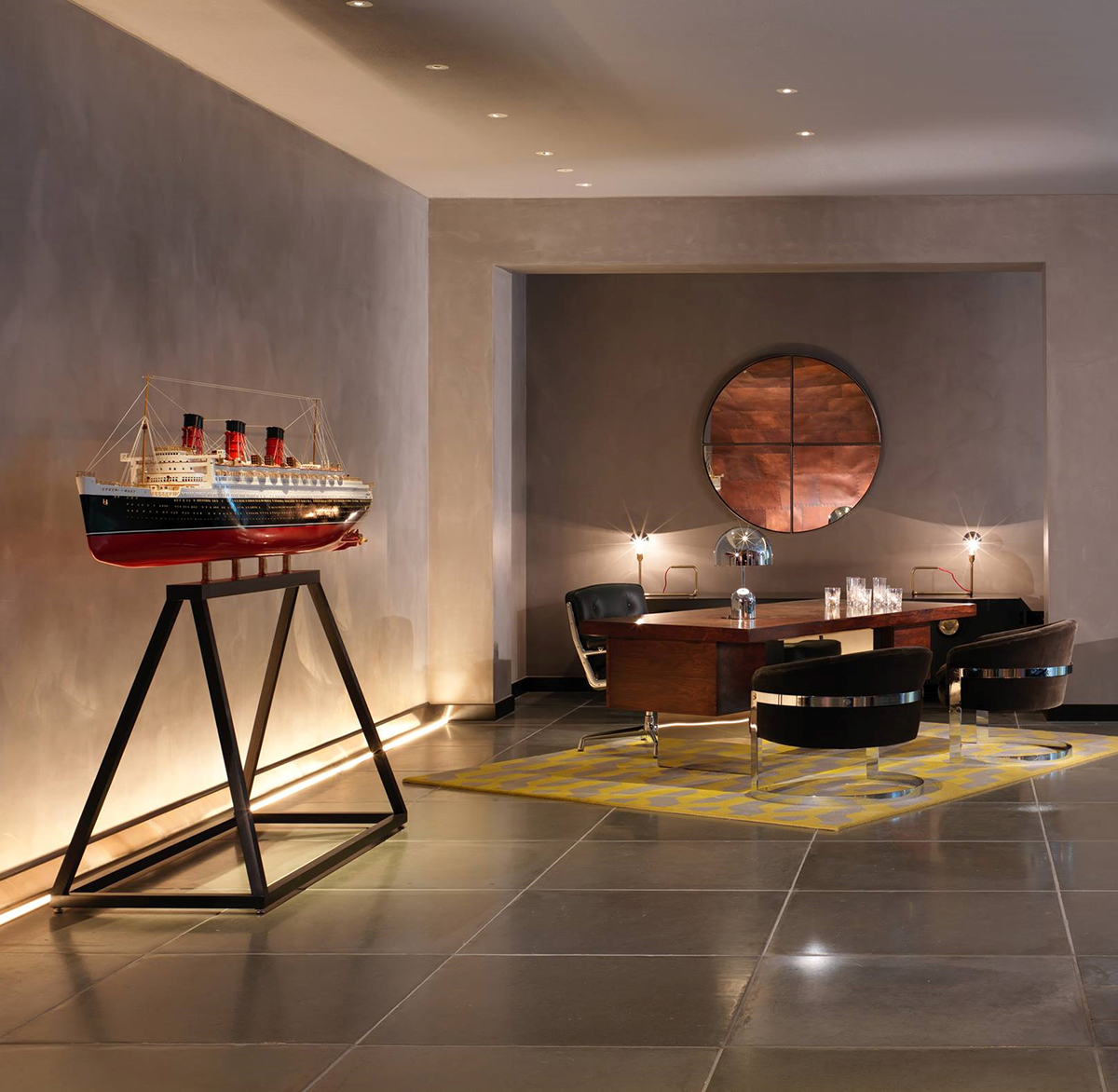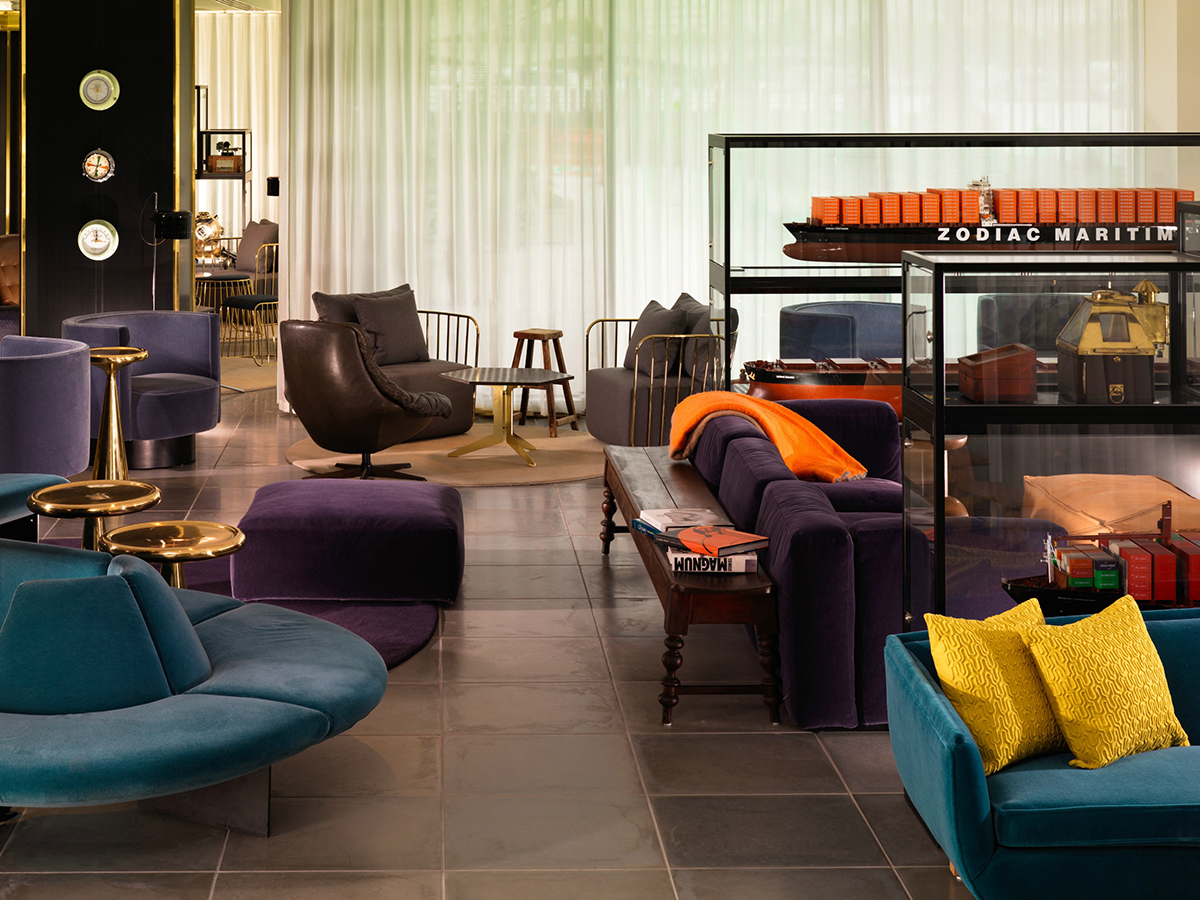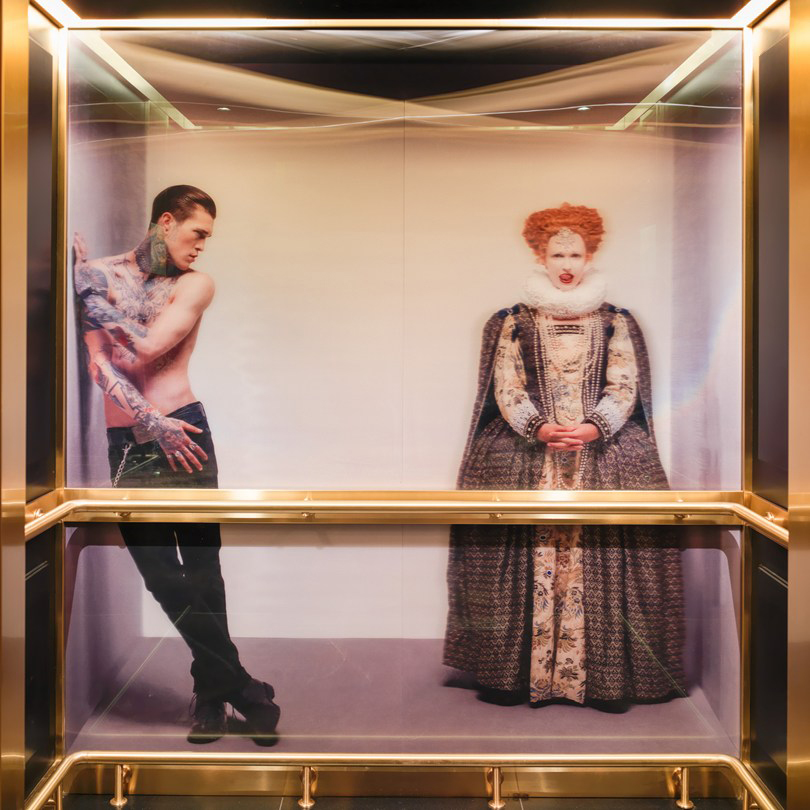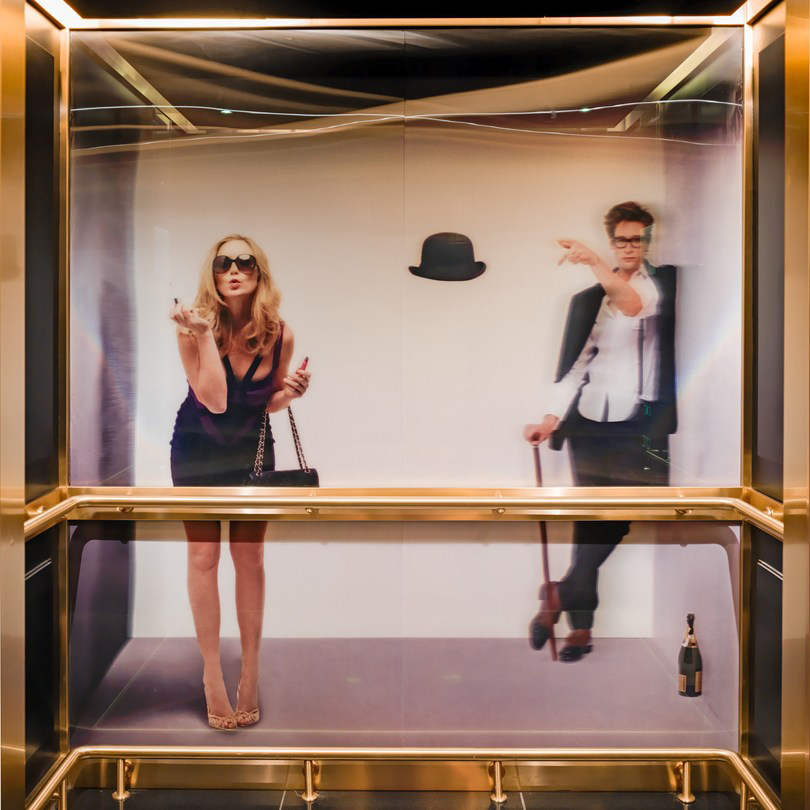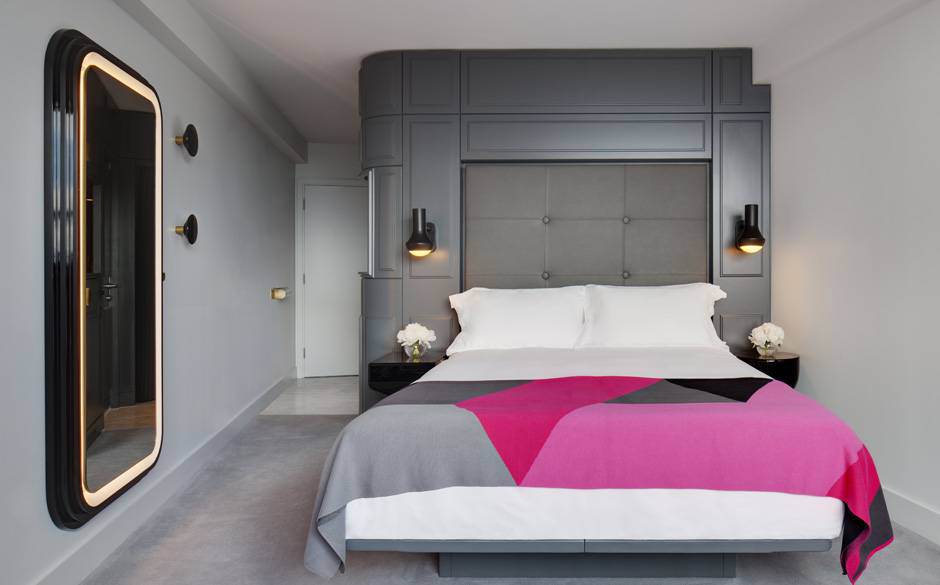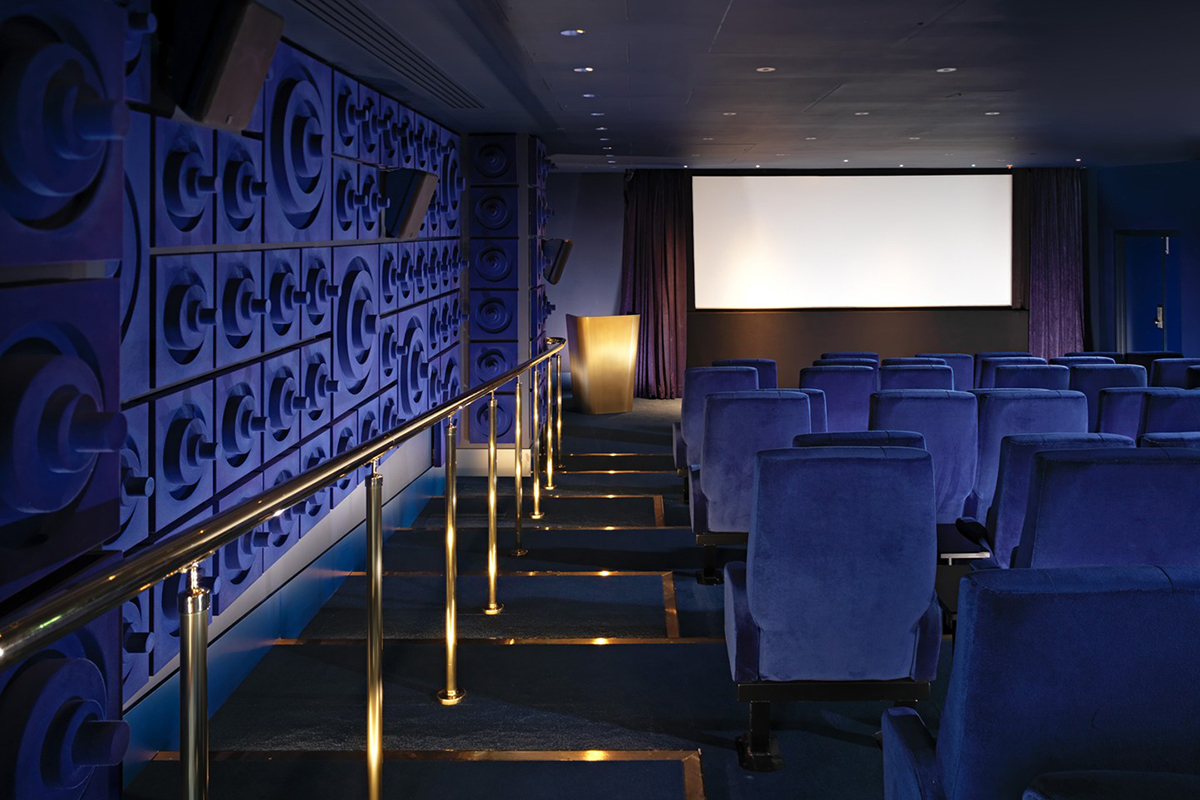The Mondrian London Tells Anew an Old Story
/Snapshot: The Mondrian London at Sea Containers is the newest Mondrian hotel, and is inspired by the classic, Titanic-era of transatlantic travel. Tom Dixon’s design revels in this maritime theme and tells a story of early 20th century luxury and excitement.
On September 30 the Morgan Hotels Group opened their doors to the new Mondrian London at Sea Containers, a hotel whose retro-modern look hosts a reincarnated version of the hospitality enjoyed previously on transatlantic travel--the classic, Titanic-era kind, not the modern 747 kind. The early 20th century aesthetic comes courtesy of Tom Dixon and Design Research Studio, who took the maritime theme evident in the Thames-side locale to the level of downright narrative.
The exterior is definitely a foretaste of that narrative, looking quite simply but magnificently like the exterior of a classic transatlantic ocean liner, with an illuminated, stepped, cuboid roof sitting atop a grid of cabin windows. As the eyes fall below the cabins another three-tiered set of windows shows that shops and social areas have replaced the cold colored metallic exterior of a cruise liner--but never fear, they simply put that hull-ish exterior inside the hotel instead of out.
For that matter, the inside confirms the outward impression and catapults it even further into the diesel retro-future that Mondrian numero quatro is shooting for, blatantly obvious with the five-metre long transatlantic liner statued thematically in the lobby against a shadowy cement wall that recalls the darker, more noir-ish intonations of the Art Deco style. If one was to enlarge the miniature hull of that model, one would arrive at the design of an entire interior wall, which stretches from outside the hotel to the inside, and throughout the Thames side of the lobby. This is a remarkably standout feature that will undoubtedly be the pride and boasting point of any guest at the hotel, not to mention the Mondrian staff and of course the Morgan Group itself.
Alcohol must be discussed, and not just because there is some intoxicating charm about ships, Art Deco, and luxury that co-occurs with a thirst for a drink, but also because it’s a forum for discussing some of the nuances of Dixon’s design for the Mondrian. The Dandelayan bar, for instance, is curiously out of place with other features like the hull-wall or the ocean liner model, but perfectly in place with the hotel taken as a single article of aesthetic appreciation. The Dandelayan is the true locus of the British influence on the design, and hosts a cocktail menu designed by Ryan Chetiyawardana, a.k.a. The Lyan. This gentleman cocktail-program designer has operated at the forefront of the U.K’s bar scene for a decade, has been twice-named the U.K’s Bartender of the Year, and does side-work as a contributing columnist for connoisseur and enthusiast magazines like Imbibe. The design of the Dandelayan is reverential and atemporal. It is executed with a distinctly eccentric British charm, with an emerald bar and mix-match vintage furniture, and even chicken-bone flavored martinis courtesy of the master mixologist Mr. Lyan. The emerald in particular seems to be an homage to a 19th century Britain that had interests in some of the more exotic and tropical locales of the globe like Arabia and India, while the vintage furniture seals the deal on that nostalgia, while the buzz from the chicken-bone martini will only heighten the appreciation.
The rooftop bar is the next, and more glamorous, area to drink, and it also boasts fabulous London skyline views amongst which can be seen the Tate Modern, the National and Globe theatres, Royal Festival Hall, and of course the other view-tastic marvel of the city, the London Eye; all of which drinkers may enjoy from either the bar’s glass box structure or its outdoor terrace. The rooftop lounge is an appropriation of Americana with its plush purple chairs and its Art Deco brass bar, a stainless steel version of which adorns the restaurant and is described as being the focal point of that dining area. This a very real embodiment of the transatlantic narrative Dixon and his team have implemented, and represents a successful extension of the materialistic into the functional and practical. A restaurant needs a bar, after all.
The Mondrian’s living quarters or cabins definitely emphasize the maritime narrative with doors whose rosewood facades are ornately British, and with porthole-shaped bathroom mirrors. The curved walls are a unique feature that recalls the curvature of the ocean waves but also gives a compact feel appropriate to an ocean liner cabin without the tight space usually concomitant to that compactness. Balconies are so constructed as to prohibit a view of the Thames path below, which conveys a feeling of being truly at sea.
The newest member to the family, Mondrian London at Sea Containers fits right into the eclectic South Bank Scene with its port-side version of maritime glamour and tells, in its walls, cabins, lounges, and bars, a hundred year old story of Anglo-American excitement, enthusiasm, technological advancement, and multicultural luxury.
Photography courtesy of Morgan Hotels Group
